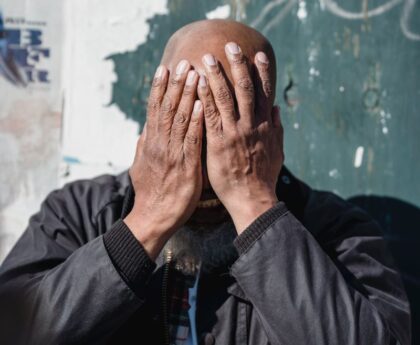Addressing Barriers to Aboriginal Education in Australia
The Good News
In Australia, many Aboriginal and Torres Strait Islander students are facing significant obstacles in accessing basic education. These barriers include geographic isolation, discrimination, lack of cultural recognition, and financial costs. However, there is hope for change as the Australian government has recognized the urgency of closing the education gap and has implemented several strategies to address these barriers.
Geographic Isolation
One major challenge Aboriginal and Indigenous students face is geographic isolation. As these communities tend to be more prevalent in remote regions, accessing education often requires traveling long distances to attend school or boarding for secondary education. Dr. Marnie O’Bryan and Dr. William Fogarty from the Australian National University’s Centre for Aboriginal Economic Policy Research conducted a study that found moving away from home for secondary education was the only option for many students. However, boarding is not feasible for all, leading to high dropout rates among those who lack access to schools in remote areas.
Discrimination
Compounding the issue of geographic isolation is the racism and discrimination faced by Indigenous students. Many Aboriginal and Torres Strait Islander students feel unwelcome by their non-Indigenous peers, leading them to avoid school altogether. Instances of racism, such as being verbally harassed by non-Indigenous students, can have a profound negative impact on their well-being and motivation to continue their education. Addressing discrimination in schools is crucial for creating inclusive and supportive environments for all students.
Lack of Cultural Recognition
Despite the fact that Aboriginal and Torres Strait Islander peoples have a history in Australia spanning over 65,000 years, their presence and contributions have often been ignored or misrepresented in history textbooks. The narrative that white colonizers discovered and developed Australia from nothing has been predominant, neglecting the long-standing Aboriginal and Indigenous presence in the region. Although multiculturalism replaced the “White Australia Policy” in the 1970s and textbooks began to acknowledge Indigenous peoples, the persistent idea that white colonizers were the natives of Australia has perpetuated a lack of cultural recognition. Including accurate and comprehensive Indigenous history and perspectives in the education system is essential to rectify this situation and foster cultural understanding and appreciation.
Costs
Poverty and socio-economic disadvantage further exacerbate the barriers to Aboriginal and Indigenous education in Australia. The Australian Government estimates that more than 120,000 Indigenous people were living in poverty in the early 2000s, making it difficult for many families to afford school fees, supplies, clothing, and transportation costs. In remote areas, where Indigenous communities are more prevalent, the cost of education is often even higher due to additional tuition and transportation expenses. As a result, many Indigenous young people are deprived of education because of financial necessity rather than choice. Breaking the cycle of disadvantage requires addressing the systemic poverty and providing financial support to ensure equal access to education.
Addressing the Barriers
Recognizing the significant educational disparities between Indigenous and non-Indigenous populations, the Australian Government has taken steps to address the barriers faced by Aboriginal and Indigenous students.
Aboriginal Education Strategy (AES)
In 2018, the government introduced the Aboriginal Education Strategy (AES) to create more inclusive educational environments for Indigenous students. Focusing initially on South Australia, where 2.4% of the population identified as Aboriginal or Torres Strait Islander in 2021, the AES aims to achieve three main goals: increasing students’ engagement with Aboriginal languages, creating culturally-responsive learning environments, and developing individually-tailored learning plans for Aboriginal students. This strategy acknowledges the importance of cultural recognition and personalized approaches to improve Indigenous education outcomes.
Aboriginal Learner Achievement Leaders’ (ALALR) Resources and Culturally Responsive Framework
To support the AES, the South Australian Department for Education has introduced the Aboriginal Learner Achievement Leaders’ (ALALR) resources. These resources assist leaders and teachers in supporting the learning of Aboriginal students, reinforcing the focus on cultural responsiveness and inclusivity. Additionally, the implementation of the Culturally Responsive Framework in schools prioritizes creating inclusive environments for Aboriginal students and employees. These initiatives aim to build understanding, respect, and appreciation for Aboriginal cultures and provide the necessary support for educational success.
Good to Great Schools Australia (GGSA) Program and Kimberley Schools Project (KSP)
The Australian Government has also introduced programs like the Good to Great Schools Australia (GGSA) program. GGSA focuses on improving teaching skills and student outcomes in schools with high rates of Indigenous enrollment. Moreover, the Kimberley Schools Project (KSP) aims to enhance teaching, attendance, and student success across the region, where Aboriginal learners comprise a significant portion of the student population. These initiatives target specific areas with a high concentration of Indigenous students, recognizing the need for tailored interventions to address the unique challenges they face.
Continued Efforts and Scholarships
While it is encouraging to see increased government and social awareness of the barriers faced by Aboriginal and Indigenous students, there is still much work to be done. One crucial step moving forward is to provide increased scholarship funding and financial support for struggling Aboriginal and Indigenous students and their families. With access to adequate financial resources, these students can overcome the obstacles they face and pursue higher education and the opportunities it brings.
Closing the education gap between Indigenous and non-Indigenous communities is not only a matter of social justice but also essential for Australia‘s social and economic health. By dismantling barriers, increasing cultural recognition, and providing financial support, Australia can pave the way for a future where all Aboriginal and Indigenous students have equal opportunities to access quality education and build better lives for themselves and their communities.

<< photo by Sakina Mammadli >>
The image is for illustrative purposes only and does not depict the actual situation.
You might want to read !
- Breaking the Cycle: Overcoming Challenges to Indigenous Education in Australia
- “Taming the Lions: Redmayne’s Heroic Penalty Saves Propel Australia to the Cup”
- “Another Epic Victory for the Socceroos: Sydney Triumphs in Marathon Match”
- The Rise of Fußball Powerhouses: Harry Kane Joins Bayern Munich in Mega $126 Million Deal
- “The Extraordinary Comeback: Vicente Luque’s Triumph Over Adversity”
- “Matilda Pave the Way: Anticipating Australia-England Showdown in Women’s World Cup”
- The Complex Dynamics of Racial Tensions Unveiled: Assault Charges Loom Over Alabama Riverfront Brawl
- Score Big with Your Very Own Sam Kerr Mega Wall Poster
- “Battle of the Titans: Ireland and Nigeria Clash in Women’s World Cup 2023 Showdown”




